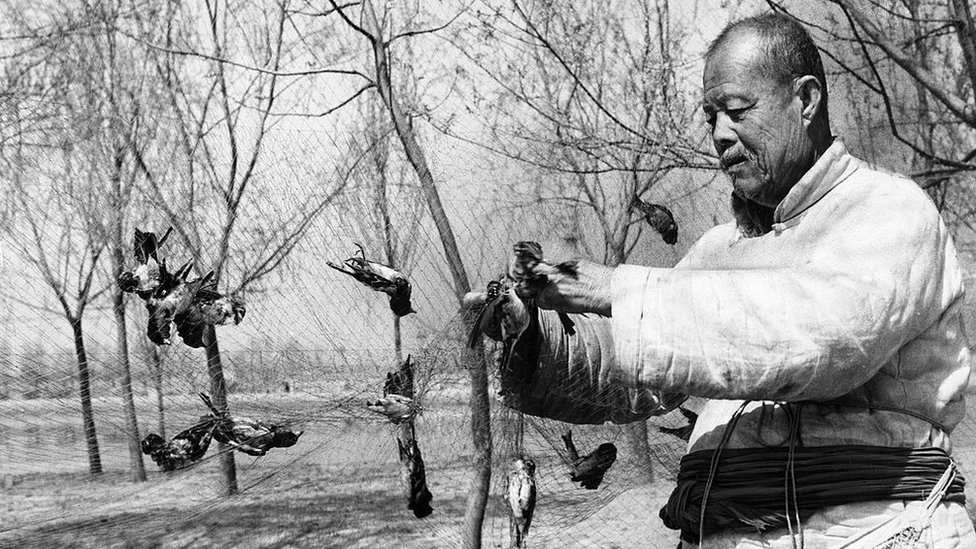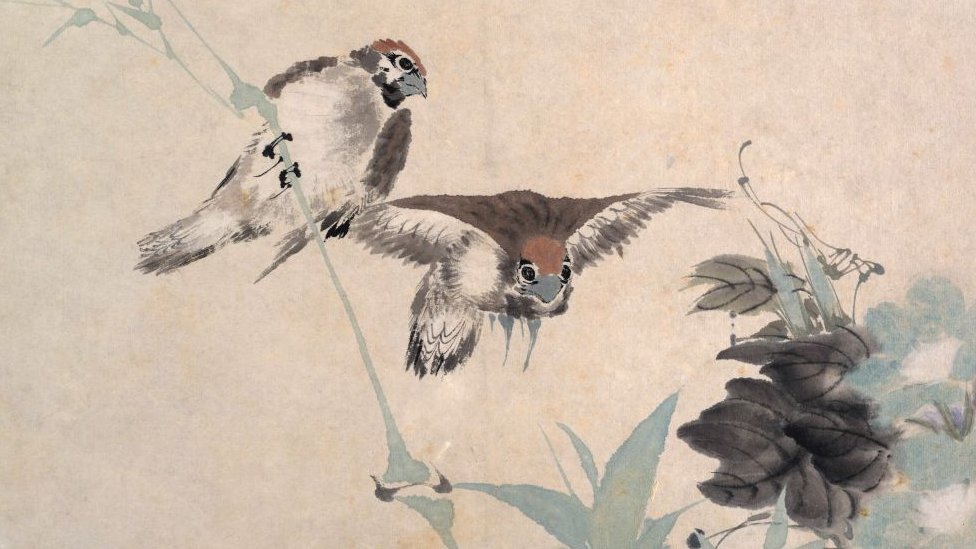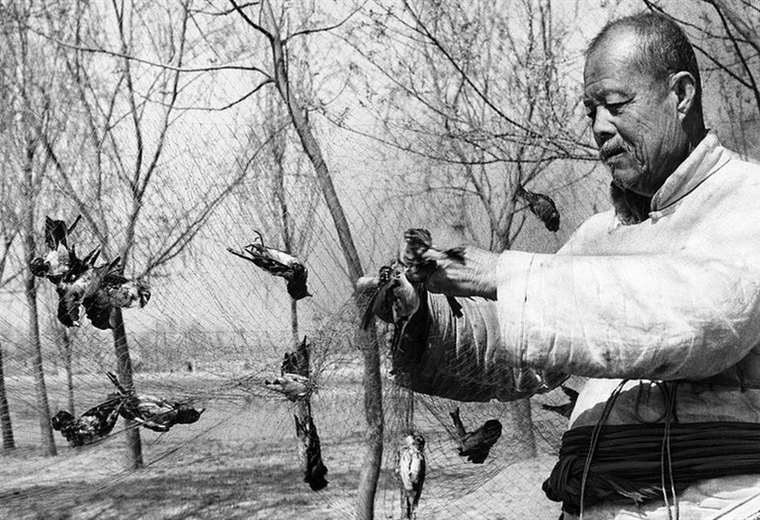July 23, 2022, 7:55 AM
July 23, 2022, 7:55 AM
“Between 1958 and 1962 China descended into hell.”
Dutch historian Frank Dikötter begins his book “The Great Famine in Mao’s China” with this forceful phrase.
Diköter describes the period known as “the Great Leap Forward”, in which Mao Zedong, the man who established communism in China, launched the entire country into a race to catch up with the world’s most developed nations, through the collectivization of the land and rapid industrialization.
Historians disagree on the number of people who died in the great famine that followed this “leap forward.” Estimates, before Dikötter, ranged between 15 and 32 million, but the Dutch historian considers that “at least 45 million people died unnecessarily between 1958 and 1962″.
One of the most absurd episodes of those years of horror would be the “four plagues” campaign, as Kim Todd explains to BBC Mundo:
“Part of Mao’s Great Leap Forward was directed against animals that he thought were an obstacle to Chinese development, one way or another; so there were four declared plagues: rats, mosquitoes, flies and sparrowsand he used all the power of the Chinese people to try and get rid of them.”
The first three animals were exterminated in the name of hygiene and the health of the population, but the last ones had committed another type of sin:
“Sparrows were on this list because they eat a lot of grains. And Mao wanted these grains to be exclusively for people,” adds Todd, a natural history writer and author of the book “Sparrow.”
But the killing of millions of sparrows would come at a very high price and very soon the country would be forced not only to remove these birds from the red list, but also to import them.
On the brink of extinction
“History is littered with environmental catastrophes, but few compare to the one that unleashed China in 1958. That was the year that Mao Zedong, the founding father of the People’s Republic of China, decided that his country could do without plagues like the sparrows. The impact of this ill-conceived decision – along with many other policies he put in place – caused a ripple effect of destruction.”
This is how John Platt, environmental journalist and editor of The Revelator, describes what happened in these years.
In dialogue with BBC Mundo from Portland, United States, Platt recalls what the methods were to end this “plague”.
“They were shot, people smashed nests and eggs, but the strangest method of extermination was chasing them and making a lot of noise until they drop dead.
Sparrows need to rest in their nests. Being a bird is a very intense thing in terms of energy consumption. Flying around looking for food is very tiring for these small animals.”
According to Platt, people killed so many sparrows that there are stories from the time describing people picking up dead sparrows with their shovels “and within two years, one of the most widespread species was almost extinct.”

Todd adds that the methods used against the sparrows were not precise enough to that only affectan to this species.
“Masses of people destroyed the nests and killed the young, and in cities like Beijing people made a lot of noise to prevent the sparrows from flying in terror, which caused these birds to die of exhaustion. And this did not end up affecting not only to the sparrows but also other birds“.
As the Chinese journalist and environmental activist Dai Qing wrote years ago, “Mao knew nothing about animals. He did not want to discuss his plan or listen to the experts. He simply decided that the ‘four pests’ had to be killed.”
But what happened so that rats, flies and mosquitoes continued to be persecuted and sparrows were not?
locust time
“What happened after the campaign is that there was an insect infestation. And people interpreted this infestation as a result of the campaign against sparrows. And eventually sparrows came off this list of pests and were replaced. by bedbugsTodd explains.
“And to restore some natural balance they had to import hundreds of thousands of sparrows from Russia,” adds Platt.
For BBC journalist Tim Luard, an expert on East Asia, the problem was the sparrows’ fondness for locusts:
“With no sparrows to eat them, a plague of locusts ensued, crops failed, and millions of people died in the famine that followed.”
But for Todd, it’s hard to say there’s a direct correlation between the killing of sparrows, the insect infestation, and the famine:
“What sparrows do most is eat grain. There’s a certain period where they look for insects to feed their young. And if you think of a huge number of sparrows that don’t do that anymore, then you might think that’s going to have an effect on the insect population.
And it must also be said that this campaign did not affect only sparrows but many birds, some of them even more consumers of insects than sparrows.”

Platt, for his part, considers that “it is not wrong to say that the campaign against the sparrows contributed to this mass famine, but there are factors that made it all worse.”
The main factor, for the journalist, was the drought that occurred in 1960as well as the authoritarianism that prevented the Chinese government from assuming the errors of its campaigns to bend nature with the push of the mass of its population.
Among these errors, Platt points against agricultural production practices that would result in total failure.
Other authors have also highlighted that, driven by the official obsession with increasing steel production, many peasants left the countryside to work in factories and, therefore, the quantity of products from the countryside in those years could not cope with the famine.
The war on the other shore
Platt points out that this whole combination of factors does not seem today to be a matter of the past, but rather there are several elements that are repeated today.
“Me I find parallels with the present: we have the resurgence of authoritarianism around the world, we have people making decisions that are not based on science, we have droughts and heat waves, and many cases in which nature has lost its balance,” says the journalist.
Interestingly, adds Todd, this was not the only time in human history that these birds were persecuted.
“In the US we also had what was called ‘war against sparrows’, although it was different from what happened in China,” the writer tells BBC Mundo.
The story takes place in the mid-19th century, when many Americans decided it was a good idea to import sparrows, among other reasons, to eat insects.
“And a lot of people imported them, in Brooklyn, in Oregon, in Cincinnati, all over the United States. And very quickly, within a couple of decades, the sparrow population exploded. And can be aggressive towards other species. Then there were people, especially ornithologists, who began to notice that certain native bird species had disappeared from certain environments, which were now occupied by sparrows,” says Todd.
So there was a kind of war between ornithologists who proposed to get rid of some of these sparrows and the people who wanted to conserve them.
Although this debate did not have the same consequences as in China.
“And I think neither side managed to impose their arguments on the other, but the sparrows were definitely the big winnersbecause while I’m giving this interview to the BBC I’m listening to them through my window, and I’m in Minneapolis, in the middle of the USA. So they feel at home here, “concludes Todd.
Now you can receive notifications from BBC News World. Download the new version of our app and activate it so you don’t miss out on our best content.


















